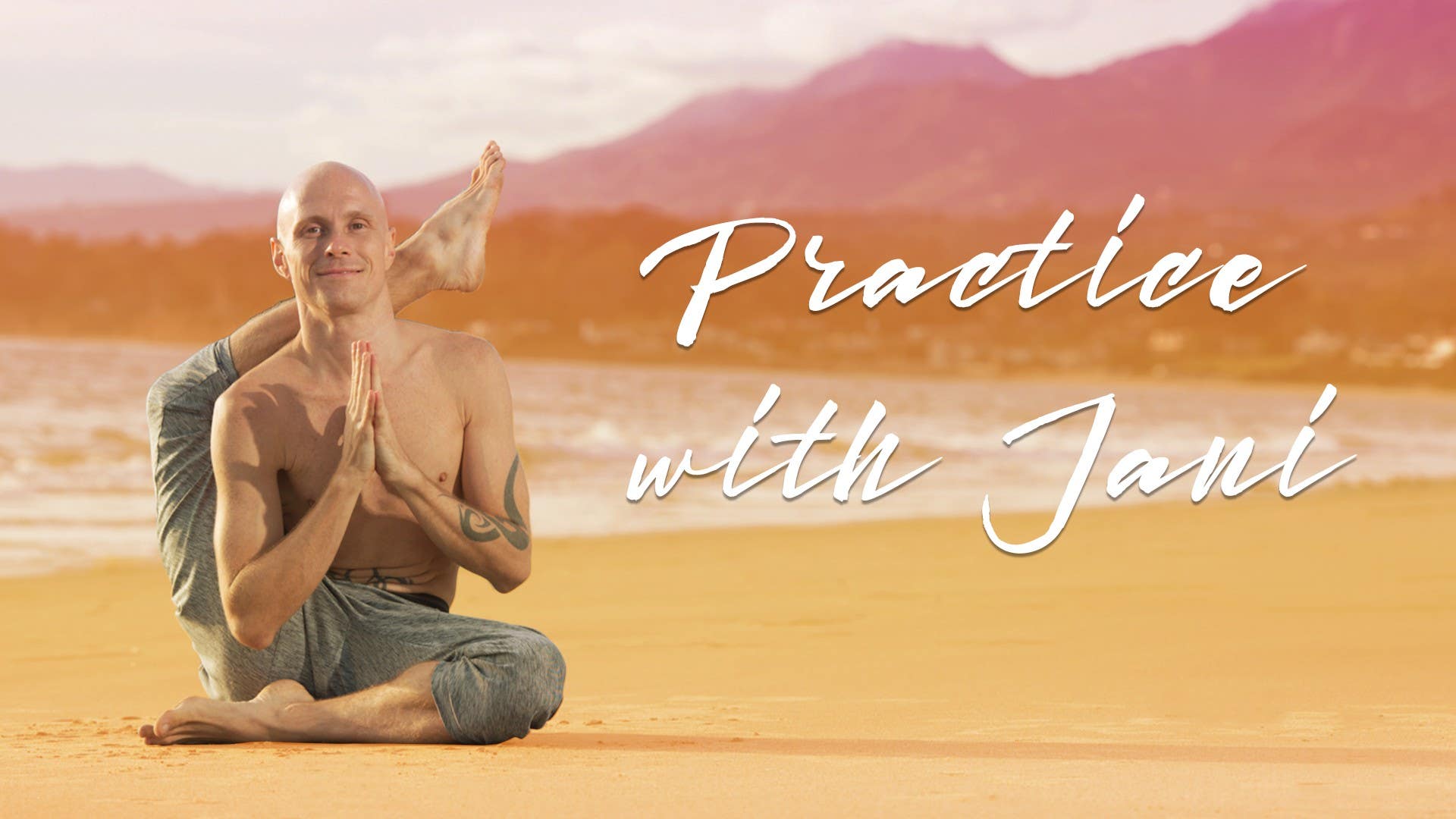Description
About This Video
Transcript
Read Full Transcript
(waves crashing) So, first of all bandhas is Mulabandha, and how Mulabandha is built with the marmas. Let's start from the perineum. The perineum, there's one marma, it's called kandasthana marma. It's between the private part and anus, there's one marma. First try to feel that marma.
Marma means kind of triggering point, sort of energetical point. So try to feel that marma first on the perineum. And then we have other marma, which is the crown of the head, mundhwa marma. So now we have two marmas and then when the marmas, they don't have so much meaning without having relationships with the other marmas. So now we built the relationship between the two marmas.
So lift the perineum up towards the crown of the head. So when the two marmas are connected together with the line then that's called sthira. Because that creates the stability. So lift the kandasthana marma, the perineum, up towards the mundhwa marma, which is the crown of the head. So now we have the foundation for the Mulabandha.
There's two mulabandhas, there's ha and ta. Ha is the compressive mulabandha, when you life the perineum up towards the crown of the head. It's like a triangle, you lift up and towards the center line. So that's compressive mulabandha. And that's supports the vertical line of the spine.
And then we have ta mulabandha, which is that you lift the perineum up and away, energetically away from the center. So this is not anatomical, this is not physical action, which means basically that when you lift the perineum away from the center, you still work with these two marmas. So mundhwa crown of the head and perineum kandasthana. So you still have this one line. And then you can do this kind of paradoxical thing that you lift up and away from the center without actually moving away from the center.
Physically it's not really possible but energetically. Try to do it and maybe after practicing for a while it'll start to make sense. So perineum up towards the crown of the head and away from the center. So this is now ta mulabandha, expansive mulabandha. And that supports the horizontal line of the spine.
So we have ha mulabandha, supports the vertical. And then we have ta, which supports the horizontal. And now let's try to do a vyagra asana, tiger pose, and see if we can apply this ha and ta mulabandha in this posture. So come on your four first and then inhale, lift the left arm up. You can stay here, this is okay.
Or if you have balance, lift the right leg up. Extend crown of the head forward. And when you are the static posture, activate first ha mulabandha. So lift the perineum up and towards the center line of the body. Hold it there, couple of breaths.
And then change the bandha. Keep on lifting up and now lift it away from the center which means that this energetical expansion, horizontal expansion of the torso. And when you come out of the pose, exhale, hand down and then knee down, and then release the bandha. And then let's try other side. So when you go to the posture and you start to go to the posture, do ha mulabandha, so perineum up and towards the center.
And then when you are in the posture, then do ta, perineum up and away from the center. And try to give these two marmas. So perineum kandasthana, and crown of the head mundhwa. So keep the line, that straight line between these two marmas. Hold couple of breaths and exhale.
Hand down and then kneed down. So this was mulabandha, ha and ta mulabandha, and what is the anatomy of these bandhas is that there's two marmas, kandasthana perineum and the mundhwa crown of the head, and then there's the lina, sthira, between these two lines, and mulabandha is built between these. Thank you.






You need to be a subscriber to post a comment.
Please Log In or Create an Account to start your free trial.